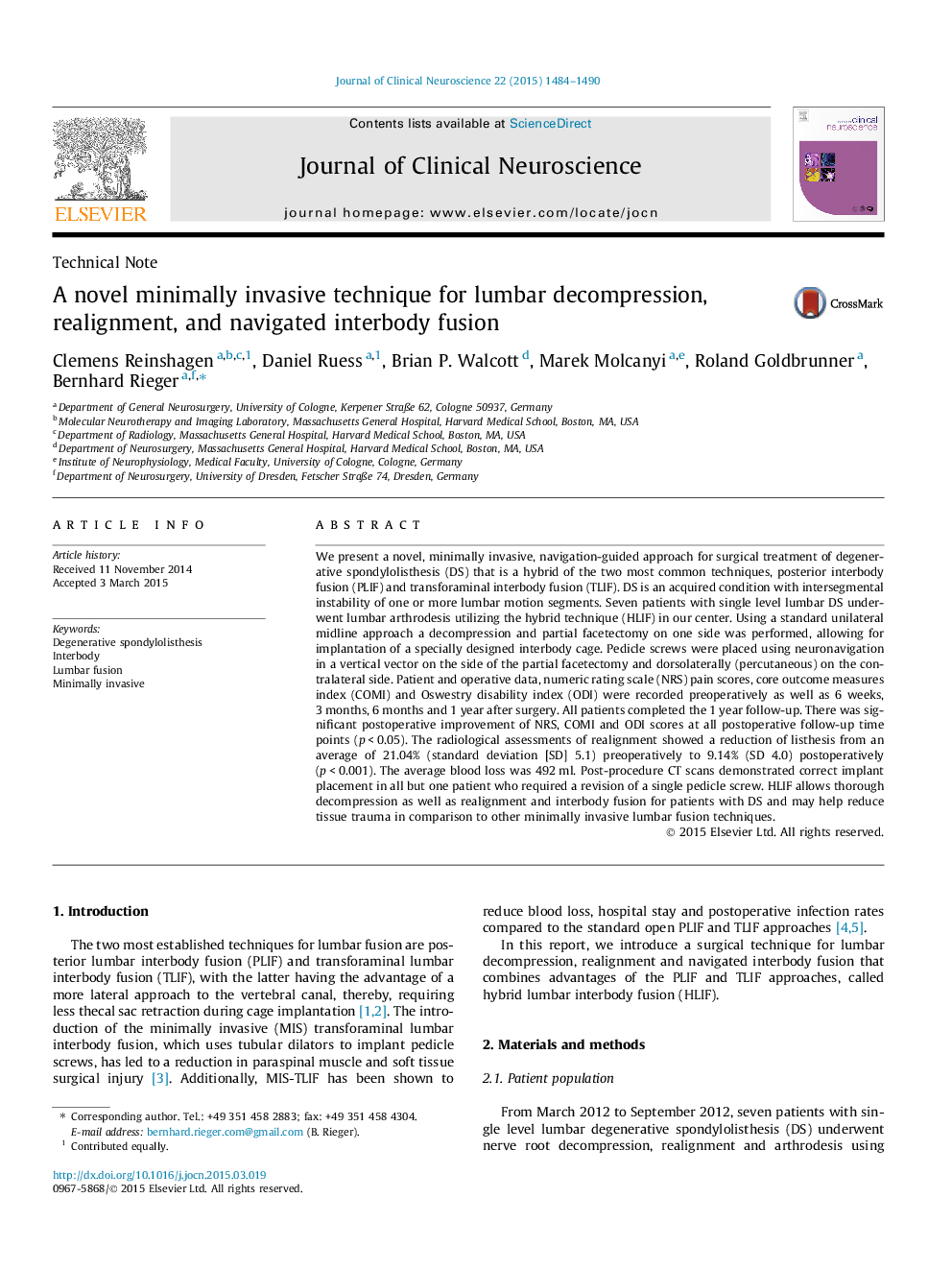| کد مقاله | کد نشریه | سال انتشار | مقاله انگلیسی | نسخه تمام متن |
|---|---|---|---|---|
| 3058917 | 1187416 | 2015 | 7 صفحه PDF | دانلود رایگان |
• HLIF is a navigated minimally invasive technique, that combines advantages of the PLIF and TLIF approach.
• A traditional unilateral dorsal midline approach serves for thorough decompression as well as implantation of ipsilateral pedicle screws in a vertical (dorsoventral) fashion.
• The same unilateral dorsal midline approach is employed to implant a specially designed cage.
• Contralateral pedicle screws are placed in a traditional minimally invasive percutaneous dorsolateral fashion.
• HLIF minimizes tissue trauma.
We present a novel, minimally invasive, navigation-guided approach for surgical treatment of degenerative spondylolisthesis (DS) that is a hybrid of the two most common techniques, posterior interbody fusion (PLIF) and transforaminal interbody fusion (TLIF). DS is an acquired condition with intersegmental instability of one or more lumbar motion segments. Seven patients with single level lumbar DS underwent lumbar arthrodesis utilizing the hybrid technique (HLIF) in our center. Using a standard unilateral midline approach a decompression and partial facetectomy on one side was performed, allowing for implantation of a specially designed interbody cage. Pedicle screws were placed using neuronavigation in a vertical vector on the side of the partial facetectomy and dorsolaterally (percutaneous) on the contralateral side. Patient and operative data, numeric rating scale (NRS) pain scores, core outcome measures index (COMI) and Oswestry disability index (ODI) were recorded preoperatively as well as 6 weeks, 3 months, 6 months and 1 year after surgery. All patients completed the 1 year follow-up. There was significant postoperative improvement of NRS, COMI and ODI scores at all postoperative follow-up time points (p < 0.05). The radiological assessments of realignment showed a reduction of listhesis from an average of 21.04% (standard deviation [SD] 5.1) preoperatively to 9.14% (SD 4.0) postoperatively (p < 0.001). The average blood loss was 492 ml. Post-procedure CT scans demonstrated correct implant placement in all but one patient who required a revision of a single pedicle screw. HLIF allows thorough decompression as well as realignment and interbody fusion for patients with DS and may help reduce tissue trauma in comparison to other minimally invasive lumbar fusion techniques.
Journal: Journal of Clinical Neuroscience - Volume 22, Issue 9, September 2015, Pages 1484–1490
